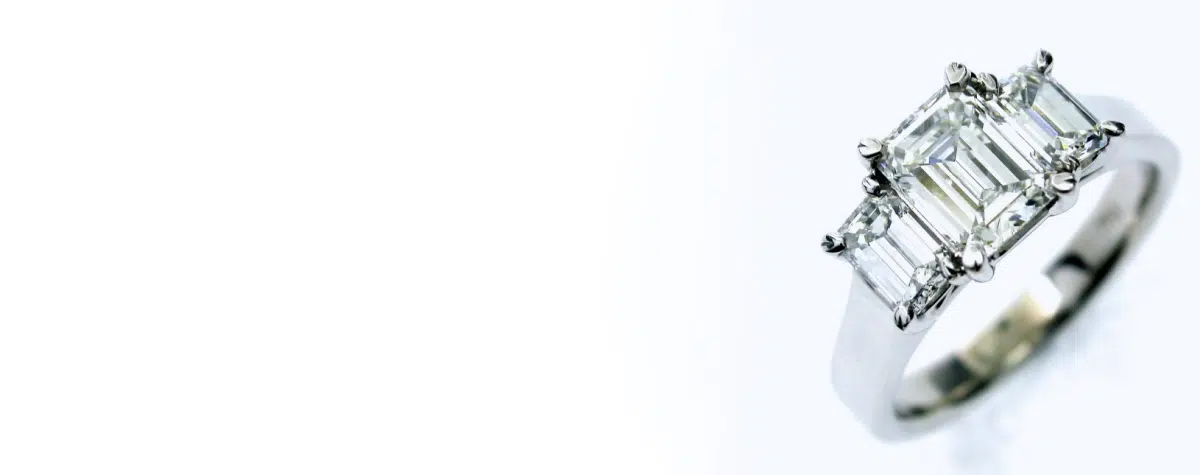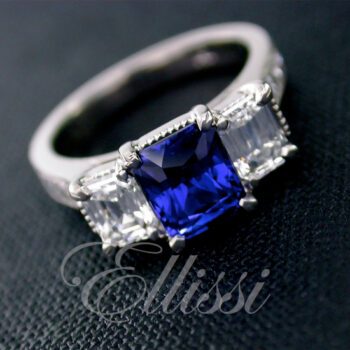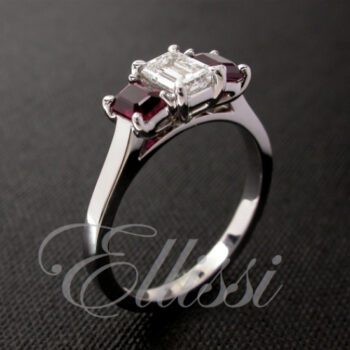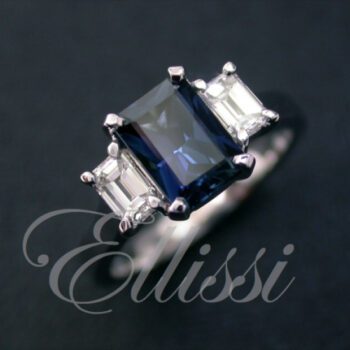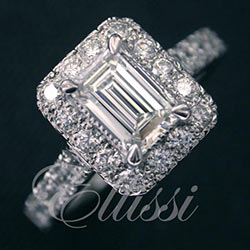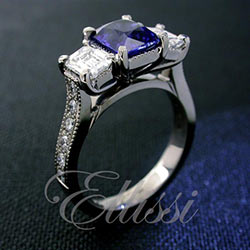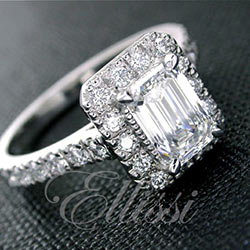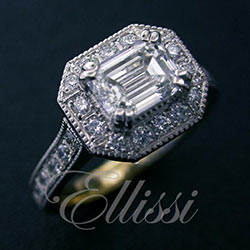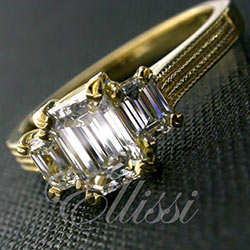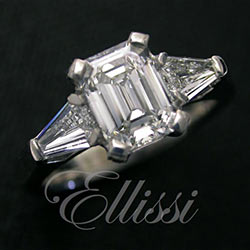-
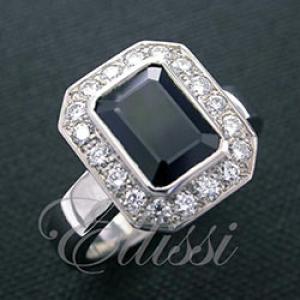
“Kastra” Australian sapphire in diamond halo.
Style Number: E5250 -
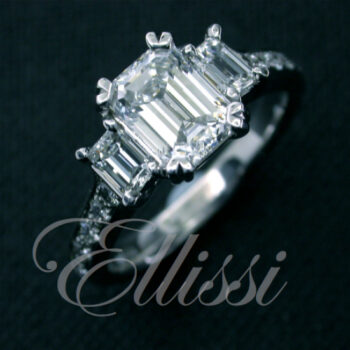
“Elloa” Triple Emerald cut diamond ring
Style Number: E9431 -
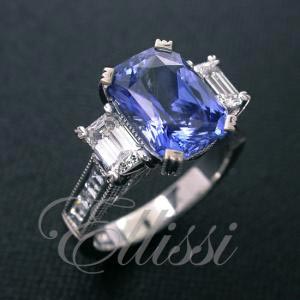
“Vivid” Art Deco style ceylon sapphire trilogy ring.
Style Number: E5206 -
“Atria” Sapphire and Emerald cut diamond ring.
Style Number: E7689 -
“Dahlia” 18 ct white gold 3 stone ruby and diamond ring
Style Number: E9795 -
“Acer” Australian Sapphire trilogy ring.
Style Number: E9867 -
“Clio” Emerald cut diamond in a halo design.
Style Number: E8355 -
“Stephania” Sapphire and emerald cut diamond ring.
Style Number: E7697 -
“Maribel” Emerald cut diamond cluster ring.
Style Number: E7591 -
“Europa” Emerald cut diamond set horizontally.
Style Number: E6509 -
“Flavia” Three stone emerald cut diamond ring.
Style Number: E6260 -
“Idetta” Emerald and tapered baguette diamond ring.
Style Number: E5527
The Emerald cut diamond is a very old, traditional cut. The design was originally copied from the way green emeralds were cut. Hence the name “emerald cut”.
The first recorded gift of an engagement ring was in 1477. This was an engagement ring given by Archduke Maximilian to his bride to be, Mary Of Burgundy. The ring was set with an emerald cut diamond. The tradition of giving your intended an engagement ring seems to have survived and is the norm today. Emerald cut rings are still very much in demand as a classic design.
Emerald cuts have a more glassy appearance than many other diamonds. This is because they have fewer facets. The cut has a geometric look. In their longer form, they can seem to have a striped appearance. In the squarer emerald cuts, often called the “Asscher cut”, the corner bevels meet in the centre on the back of the diamond. This gives the appearance of the sails of a windmill when viewed from above. The geometric cut style is often associated with Art Deco design engagement rings. The simplicity and form of the emerald cut diamond lends itself perfectly to the deco style.
As a centre diamond in an engagement ring, the emerald cut can often benefit from additional diamonds around its outer edge. This helps to define the emerald cut shape and also provides a contrasting cut pattern. However, some diamond cut types do not always work well with emerald cuts. They can compete with the central diamond. This can look a bit odd rather than complementing the emerald cut.
The emerald cut diamond can be used in halo clusters, solitaires and various combinations of fancy shape diamonds. Straight or tapering diamond baguettes work really well to add some diamond content to the shoulder of the engagement ring.
You can also use two smaller emerald cuts, one on each side of the main diamond to make a three stone diamond engagement ring. This is often tricky, as all emerald cuts tend to differ. Finding a matched pair can be challenging. It is not so much that the two smaller diamonds can’t be found, but to make the engagement ring look right, they need to not only match each other, but also the main central diamond.
When matching is done correctly, the finished engagement ring looks stunning. However, if diamonds are selected only to match in colour, clarity and weight, the ring will look very odd and mis-shaped. The cut parameters and the ratio of the diamond are very important to the look of a three stone ring. If the cut and ratio of the diamonds don’t work together, the ring will be crooked and the claws out of alignment. Definitely not what you would want for your engagement ring! Sadly we frequently see poor quality rings like this from low end retail shops. As always, careful diamond selection is critical to the outcome of the ring.
Emerald cut diamonds can be set with claws or a bezel setting. The claw set rings can be single, double or triple claws. The most popular settings are single claws in the corners of the diamond. The claws can have a square or more rounded look, depending on the design requirement. Claw setting generally gives a more traditional look to the engagement ring.
Bezel settings are a rim of gold that fully enclose the diamond’s edge. We can also make a semi bezel setting which is where the central longer edge of the diamond is exposed to create a rim just on the three sided end of the diamond. The bezel or semi bezel setting is a more contemporary look. In this design, the bezel setting becomes a main feature of the engagement ring rather that the more minimal look of the claw setting.
Whatever engagement ring design you consider with an emerald cut diamond, the primary focus once the clarity and colour is considered and decided, should be all about the cut and the diamond’s ratio – its length and width. This is because with no official cut grade given, an emerald cut can be square (Asscher), or very long and thin, or anywhere in-between the two.
Emerald cuts can be deep or shallow. The corners can be wide or almost pointed to the eye, making them look very like a baguette diamond once set with claws. The beveled rear and top of the diamond, its crown height and pavilion, can differ greatly from diamond to diamond. Poorly cut emerald cuts can be rhombic, extra thick in the girdle, running out at one end, making one end wider than the other. For more information on what we look out for when selecting an emerald cut diamond, please click on the following link: Issues in selecting emerald cut diamonds.
With a whole host of issues to consider, it is very important that the person selecting the diamond for the engagement ring is a professional and understands all of these issues. At Ellissi jewellery, this is something that we do every day – selecting only the very best cut diamonds available.
